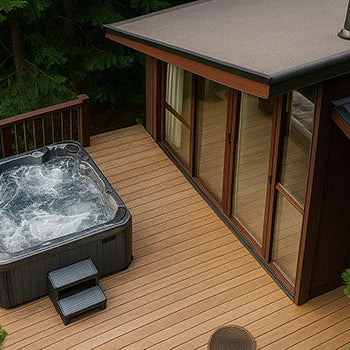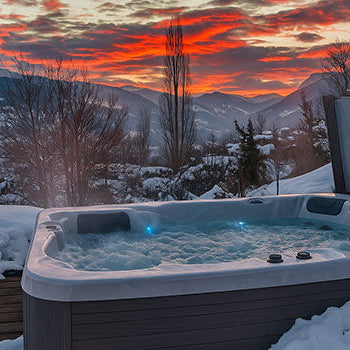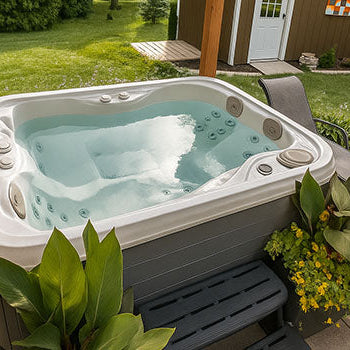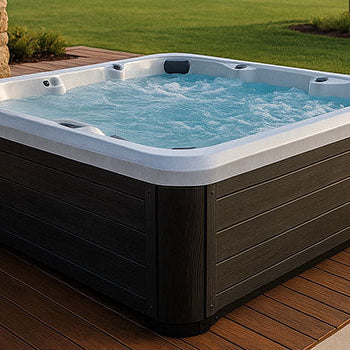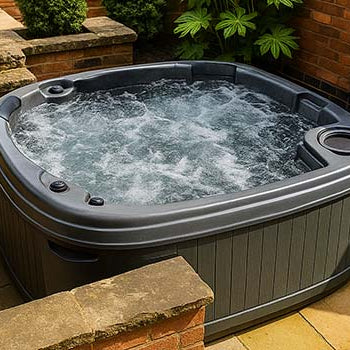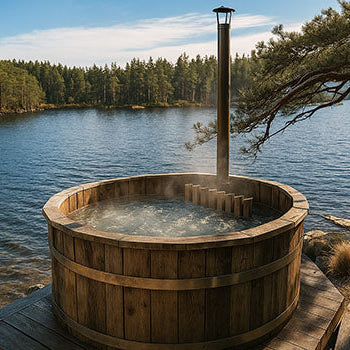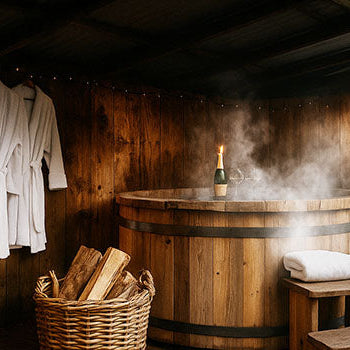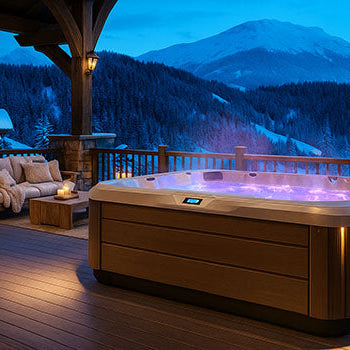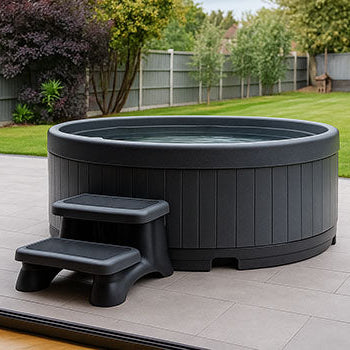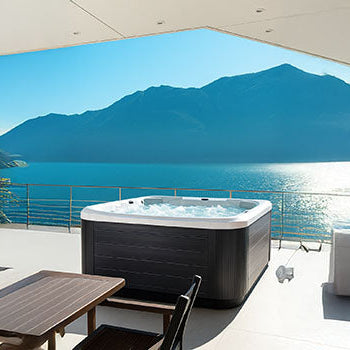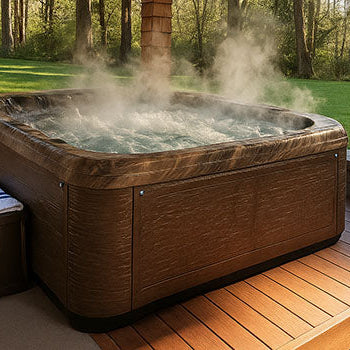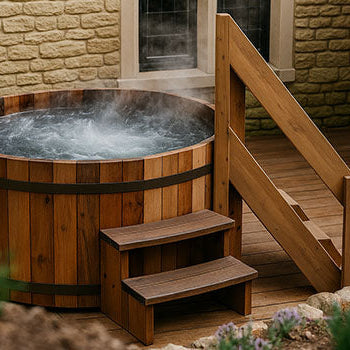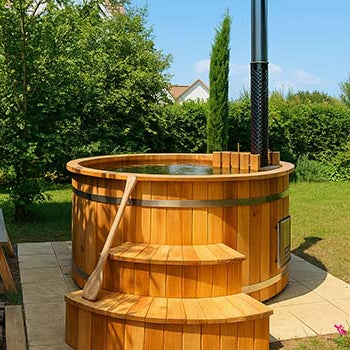Not bad, but it depends. Leaving your hot tub on overnight is usually totally fine, especially if it’s an insulated Acrylic model or a well-built Rotomoulded one. If you’ve got a traditional Wooden tub, though, it might take a bit more thought. From energy bills to water hygiene, here’s what happens when your hot tub runs while you sleep, and how to do it safely.

Understanding What Actually Happens When Your Hot Tub is "On" Overnight
Automatic Heating Cycles to Maintain Water Temperature
Your hot tub doesn’t stay heated by running flat-out all night. Instead, it uses short, automatic heating cycles to keep the water warm. Think of it like a thermostat clicking on just enough to hold the heat. Most Acrylic Hot Tubs are well insulated, so they lose heat slowly, making this system highly efficient. It keeps the water ready without running up your bill.
Programmed Filtration Cycles for Water Hygiene
While you’re tucked in bed, your hot tub is still working behind the scenes. It’ll run scheduled filtration cycles to clean the water, which helps your sanitiser do its job. These cycles usually run once or twice through the night. It’s like the tub giving itself a mini spa treatment to stay fresh. Without this, bacteria could build up, especially in tubs used often.
Smart Monitoring by the Control System
Newer models, especially well-designed Rotomoulded Hot Tubs, often come with smart control systems. These check water temperature, track usage, and adjust the heater as needed. Some even have remote apps or touchscreens. Instead of wasting power, they think for you, running only when needed. It’s all part of making overnight use low-effort and stress-free.
Addressing Common Concerns About Night-Time Operation
Noise Levels: Is It Disruptive?
Good news! modern hot tubs are mostly whisper-quiet when jets aren’t running. At most, you’ll hear a low hum during a filter cycle. If your tub’s near a bedroom window, consider running cycles earlier in the evening. Older Wooden Hot Tubs or less insulated models might groan a bit, but for most, overnight noise isn’t a deal-breaker.
Component Longevity: Does Constant Operation Cause Wear?
Surprisingly, turning it off and on too often can do more harm. Hot tubs are designed to stay on, running gently in cycles rather than powering up and down like a kettle. Just like a car engine prefers smooth starts, your pump and heater last longer when used steadily. So in this case, being “always on” is a good thing.
Energy Consumption: Is It Wasteful?
If you’ve got a well-insulated tub, leaving it on uses less energy than heating it from cold. That’s especially true for larger Acrylic tubs. Turning it off overnight to “save” can backfire when it takes hours and more energy to get warm again. A good cover is your best friend here; it traps heat and cuts your bills.
Safety: Are There Risks to Leaving It Unattended?
With proper setup, running your hot tub overnight is perfectly safe. Make sure it’s connected with RCD protection and check for any leaks or loose wires during regular maintenance. Keep the cover locked down, especially if you’ve got pets or curious kids. Most issues come from poor installation, not from leaving it on.

Why Continuous Power is the Norm for Hot Tubs
Ensuring Water is Always Ready for Use
No one wants to wait three hours while their tub warms up. Leaving it on means it’s always ready, whether it’s a spontaneous morning soak or a post-work wind-down. You get consistent comfort without the wait, and no more “guess the temperature” games.
Maintaining Consistent Water Quality Through Filtration
Your tub’s filters need to run regularly to do their job. Cutting power means cutting off filtration, and that’s when water starts to go cloudy, smelly, or unsafe. By keeping things running, even at low power, you let the chemicals circulate properly and prevent buildup.
Essential Freeze Protection in Colder UK Months
In winter, freezing pipes can cause serious damage. Keeping your tub powered prevents freezing, especially if you use energy-saving modes or set minimum temperatures. It’s a built-in feature of most smart hot tubs, and it can save you thousands in repairs.
Potential Problems Arising from Turning Power Off Incorrectly
The Serious Risk of Freezing Damage in Winter
Switch off your tub during a frosty night and you’re risking a plumbing disaster. Frozen water expands and can crack pipes and pumps. Once that happens, you’ll be looking at expensive repairs and weeks without your spa. It’s safer to let the tub tick over at a low setting.
Water Stagnation and Bacterial Growth Issues
Still water is bad news. Without heat and filtration, your tub can become a breeding ground for bacteria and algae, especially in warmer months. A few days is all it takes for the water to go murky or worse. If you're not planning to use it for a while, consider a proper shutdown and clean instead.
The Inconvenience and Cost of Reheating from Cold
Waking up to a cold tub? Not ideal. Reheating from scratch can take hours and use more electricity than maintaining a warm baseline. You’ll also be waiting around instead of relaxing. Leaving it on keeps the water ready and the experience hassle-free.
Best Practices for Safe and Efficient Overnight Hot Tub Running
Confirm Correct Electrical Installation and Safety Features
Safety starts with setup. Always have a qualified electrician install your hot tub with RCD protection. This shuts things down if there’s ever a fault, making overnight operation much safer. Don’t skip this step, it’s not worth the risk.
Adhere to Regular Maintenance and Water Care Schedules
Think of maintenance like brushing your teeth. Regular checks keep your tub healthy and your water safe. Clean filters weekly, test the water every few days, and adjust chemicals as needed. It’s quick, easy, and it prevents bigger issues down the line.
Always Keep the Insulated Cover Fitted and Secured
This is the real MVP. A quality cover locks in heat, keeps out debris, and prevents water loss. Make sure it’s fitted snugly and the clips are secured. It also keeps pets and kids safe, bonus points for peace of mind.
Use Energy-Saving Modes When Appropriate for Your Needs
Most modern tubs have economy, sleep, or smart modes. These features reduce power use without letting the water go cold. Perfect if you won’t be using it overnight but still want it warm in the morning. Check your manual or app settings to activate them.

Conclusion: Leaving Your Hot Tub On Overnight is Standard Practice and Generally Safe
So, is it bad to leave a hot tub on all night? Not at all, it’s the standard way to run most hot tubs. As long as your setup is safe, your maintenance is regular, and your cover’s doing its job, you’re good to go.
Whether you’ve got a modern Acrylic Hot Tub, a durable Rotomoulded model, or a rustic Wooden one that needs a bit more love, keeping your hot tub running gently overnight is often more efficient and much more convenient. Just follow best practices, stay on top of care, and enjoy your spa without the stress.
